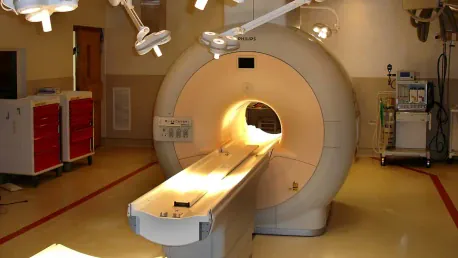Theranostic nuclear medicine presents a compelling opportunity to diagnose and treat cancer using radioactive isotopes capable of emitting imaging and therapeutic particles. One such promising isotope is Terbium-161 (Tb-161), which emits both beta particles and low-energy photons, making it uniquely suited for this dual function. Achieving medical viability for Tb-161 requires effective separation from gadolinium, a fellow lanthanide. This study investigates the adsorption properties of Tb-161 using specific resins to enhance purification processes, potentially transforming cancer treatment.
Investigating Resin Adsorption Properties
Tb-161 and DGA Resin Interactions
The adsorption properties of Tb-161 on DGA (N,N,N’,N’-tetra-n-octyldiglycolamide) resin were scrutinized to understand its effectiveness in purifying the isotope. DGA resin is known for its efficiency in absorbing specific lanthanides. Researchers first examined the kinetics, observing how rapidly Tb-161 was absorbed. Initial results indicated a rapid uptake of Tb-161 by the resin, suggesting a strong initial affinity. However, as the process continued, the rate of absorption slowed considerably. This shift is attributed to the deeper penetration of Tb-161 into the resin matrix, where it binds tightly to the chemical extractants present in DGA.
In addition to kinetics, the effect of varying temperatures on Tb-161 absorption was explored. Findings show a significant decrease in binding strength as temperature increases. This thermodynamic behavior hints at the need for controlled environments during purification to maintain optimal binding efficiency. Such insights are crucial for developing protocols that ensure the high purity of Tb-161 for medical applications.
Tb-161 and LN Resin Interactions
Exploration of Tb-161 interactions with LN (Bis(2-ethylhexyl) phosphate) resin reveals complementary behavior to DGA resin. LN resin is designed to facilitate the adsorption of lanthanide series elements due to its unique chemical structure. The initial phase of adsorption sees Tb-161 being absorbed at a rate comparable to DGA resin. This similarity underscores the efficiency of both resins in capturing Tb-161 through strong electrostatic interactions. Over time, however, the binding rate diminishes as the isotope becomes more deeply embedded within the resin matrix.
Temperature effects on LN resin adsorption mirrored those found with DGA. Higher temperatures resulted in weaker binding, suggesting that both resin types require similar environmental conditions for optimal performance. These observations highlight the nuanced interactions between Tb-161 and the chemical structures within these resins, providing a comprehensive understanding crucial for refining purification processes.
Future Research Directions
Gadolinium Interactions
With established adsorption properties of Tb-161, the next logical step involves investigating gadolinium under similar conditions. Gadolinium must be precisely separated from Tb-161 to ensure the purity of the therapeutic isotope. Researchers aim to analyze how gadolinium interacts with DGA and LN resins, exploring if it mimics the trends observed with Tb-161. Given gadolinium’s position in the lanthanide series, comparable adsorption behavior is anticipated. However, the extent of these similarities remains to be verified through methodical experimentation.
Another focus is on the impact of temperature on gadolinium adsorption. Insights gleaned from previous studies suggest that temperature may similarly affect gadolinium’s binding affinity. Understanding these dynamics is vital for creating sophisticated separation techniques that minimize contamination and optimize the yield of pure Tb-161.
Enhancing Purification Techniques
Building upon these findings, future research centers around improving separation and purification methodologies. Engaging with cutting-edge technology, such as advanced chromatographic techniques or innovative resin formulations, could offer enhanced binding properties. Researchers are also exploring the potential of hybrid resin systems that combine the strengths of DGA and LN resins, aiming for superior purification efficiency.
Additionally, computational models and simulations will play a pivotal role in predicting resin behavior under various conditions, aiding in the design of more effective purification protocols. These advances are directed toward ensuring the scalability of Tb-161 production, allowing its widespread adoption in theranostic applications.
Conclusion
Theranostic nuclear medicine represents a significant advancement in diagnosing and treating cancer using radioactive isotopes that emit both imaging and therapeutic particles. A notably promising isotope in this field is Terbium-161 (Tb-161), which emits beta particles and low-energy photons. This dual emission makes Tb-161 exceptionally suited for combined diagnostic and therapeutic purposes. For Tb-161 to be medically viable, it is crucial to achieve effective separation from gadolinium, another lanthanide element. The current study focuses on assessing the adsorption properties of Tb-161 by utilizing specific resins. These findings aim to enhance the purification process of Tb-161, potentially bringing about a transformative change in cancer treatment by offering precise diagnosis and targeted therapy. The ability to both visualize and treat tumors with the same isotope could increase the effectiveness of cancer care, making treatments more efficient and targeted.









